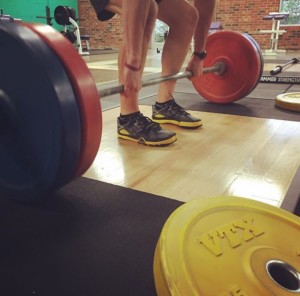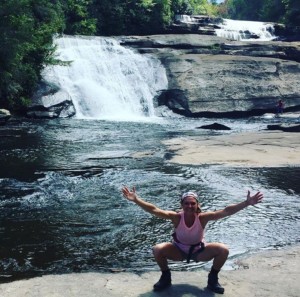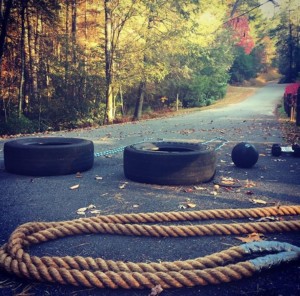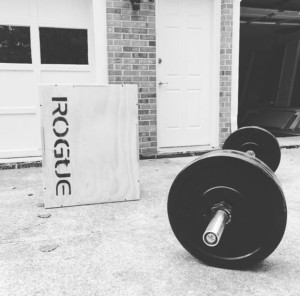By Jeff Ford
Six Steps When Adding Strength for Your Sport
 The first time you witness someone put ketchup on their eggs you might be taken aback. Or maybe it requires observing peanut butter placed on a hamburger to really throw you for a loop. No matter the subject discussed, weird combinations are always slow to acceptance. It takes time for others to dip their feet in the cold water before a number of people dive into the experience.
The first time you witness someone put ketchup on their eggs you might be taken aback. Or maybe it requires observing peanut butter placed on a hamburger to really throw you for a loop. No matter the subject discussed, weird combinations are always slow to acceptance. It takes time for others to dip their feet in the cold water before a number of people dive into the experience.
In the triathlon world, you receive very little exposure to new training methods. It is usually the same four phases of training touted in a season that’s periodized: preparation, base, build and peak/race. Most of the ingredients are comprised of swim, bike and run with very little strength in the later parts of the year. Now by no means do I believe that strength training will take the place of sport nor should it take over, but I’m asking you to look at strength for your sport in two ways: as a diagnostic tool and an activity to build your ideal positions.
By spending time in the gym, you will have a much better awareness of where your weaknesses lie and the deviations you’re susceptible to make in the water or on the road. It’s not about being the strongest person in the weight room, but more about drilling in foundational posture and mechanics that of which any human was designed to perform. This includes developing stability in the positions that matter most within your sport at the same time. If your goal is triathlon, you have many shapes to strengthen and acquire for ultimate competence. Here are six steps to slowly adding strength for your sport.
Begin with Body Weight
It was absolutely mind blowing the first time I learned to squat properly. As a young fitness professional you would think this is the first thing I would have learned? Unfortunately, my knees would dive in almost immediately and I didn’t have an understanding of a braced neutral spine, which happens to be crucial for long endurance events. By starting with body weight, you’ll be able to refine essential positions and pick up deviations before adding load. Drilling in on what’s called the Bracing Sequence, popularized by Kelly Starrett, Doctor of Physical Therapy should be applied to each movement. Your ability to squat with your knees out, complete a wormless push-up, and maintain a stable shoulder during a pull-up translates right into the positions of triathlon. Other movements to begin with include the hollow body hold and a Deadlift (light of course) as this will teach proper hinging and use of your glutes and hamstrings.
Master Your Mobility
Before I had an awareness of my mobility, I had no idea what an asymmetry meant. Based off how we’re moving and the lack of strength and/or stability in one side of our bodies, we can overcompensate. This is especially a problem for triathletes — or any endurance athlete for that matter — given the wear and tear of sport. You should master your mobility as you add strength to your sport because it will allow you to get the most out of your new training. If you’re lacking normal range of motion in various areas there’s no way you’ll be able to get stronger at the positions required. This is why the gym is a diagnostic tool, you will quickly uncover where your mobility is lacking. Functional movement is humbling. It provides answers to problems before they occur. To master your mobility first get assessed by a professional who is familiar with Functional Movement Systems (1) or a comparable screen. After that, it’s your job to keep up with self maintenance especially as training volume progresses.
Push it to Priority
Strength training shouldn’t be an afterthought in your weekly programming. I remember week after week throwing one or two workouts in here and there (like most athletes) after a long run or only when it was convenient. My perception was skewed and unfortunately I wasn’t getting stronger or witnessing the value in my training. Aim to add a strength workout early in your schedule: think Monday or Tuesday. If it’s a double session day make sure the strength training is the morning session and that your evening sport workout remains anaerobic. This will allow you to not cancel out the benefits by doing too much aerobic conditioning in conjunction with the strength work.
Get Specific
Unfortunately the biggest failure with fitness or training comes down to never identifying a purpose or being the “I want it all” athlete. Working out to look good or to have more energy are specific reasons. Finishing under eleven hours in an Ironman triathlon or losing twenty pounds are very specific goals. As you add strength training exercises, the key is to identify how these exercises will support your goal. Swim, bike and run can all be harmonized by using specific movements, whether it’s applying an overhead press for the swim to teach midline engagement and shoulder stability, or a conventional deadlift to hone in on proper hip hinging in application to the bike. Being specific leads to an efficient use of your time. It allows you to evaluate the effectiveness of your routine.
Control the Plyometrics
In my first post, Another Way to Train, I disclosed this assumption that instinctively we as humans naturally assume more is the answer. When we’re not achieving our goals, all we have to do is work harder, right? This idea is running rampant in the fitness and training world, yet unfortunately is so far from developing ideal positions in your sport. The best example when it comes to strength training for your sport is the addition of long periods of plyometric training, when in actuality plyometric training has nothing to do with volume. Focus on the stability within your jumps, what part of your foot are you landing on? What’s happening your ankles? How about your knees from takeoff to finish? Within the Power Speed Endurance method there is quite a bit of plyometric training, especially for runners, since that’s essentially what they’re doing. Never will you see high amounts, but more so a number of variations including single leg, broad jumps and depth jumps. Jump training makes the unknown in your sport knowable.
 Go Heavy
Go Heavy
Now I saved this one for the end because it gets the most kickback and was a concept I was fearful of when I firsted started adding strength training to improve with my endurance work. For too many years, my routine was comprised of two to three sets, ten to fifteen repetitions of moderately heavy weights. Sadly not only did I not see any real impact. For endurance athletes, the need is not merely more muscular endurance training (which is what you get in strength training with lots of repetitions). By focusing on a few main lifts, such as the squat, deadlift and press you’ll build strength faster, improve your body composition, and strengthen connective tissues and bone (2). There’s a relative amount of strength needed for speed and power for all endurance athletes, to what that level exactly might be is unknown, but it exists. Building overall strength optimizes your body’s ability to function better than others in the field. Once form is correct and strength positions are dialed in, going heavy a few times a week becomes a must.
Now remember that peanut butter and jelly wasn’t a household combination overnight. As you add strength training to your routine it will take time to see progress and to become comfortable with the new movements. Think back to your first open water swim with a massive group of triathletes. Was it easy? By implementing these six steps you’ll begin to see major performance benefits, and furthermore optimize your overall health at the same time.
Sources:
(1) Movement, Functional Movement Systems, Gray Cook with Dr. Lee Burton, Dr. Kyle Kiesel, Dr. Greg Rose & Milo F. Bryant
(2) Seven Reasons Why You Should Lift Heavy Weights, Poliquin Group Editorial Staff.
Jeff wrote this article for beginnertriathlete.com.

No Comments